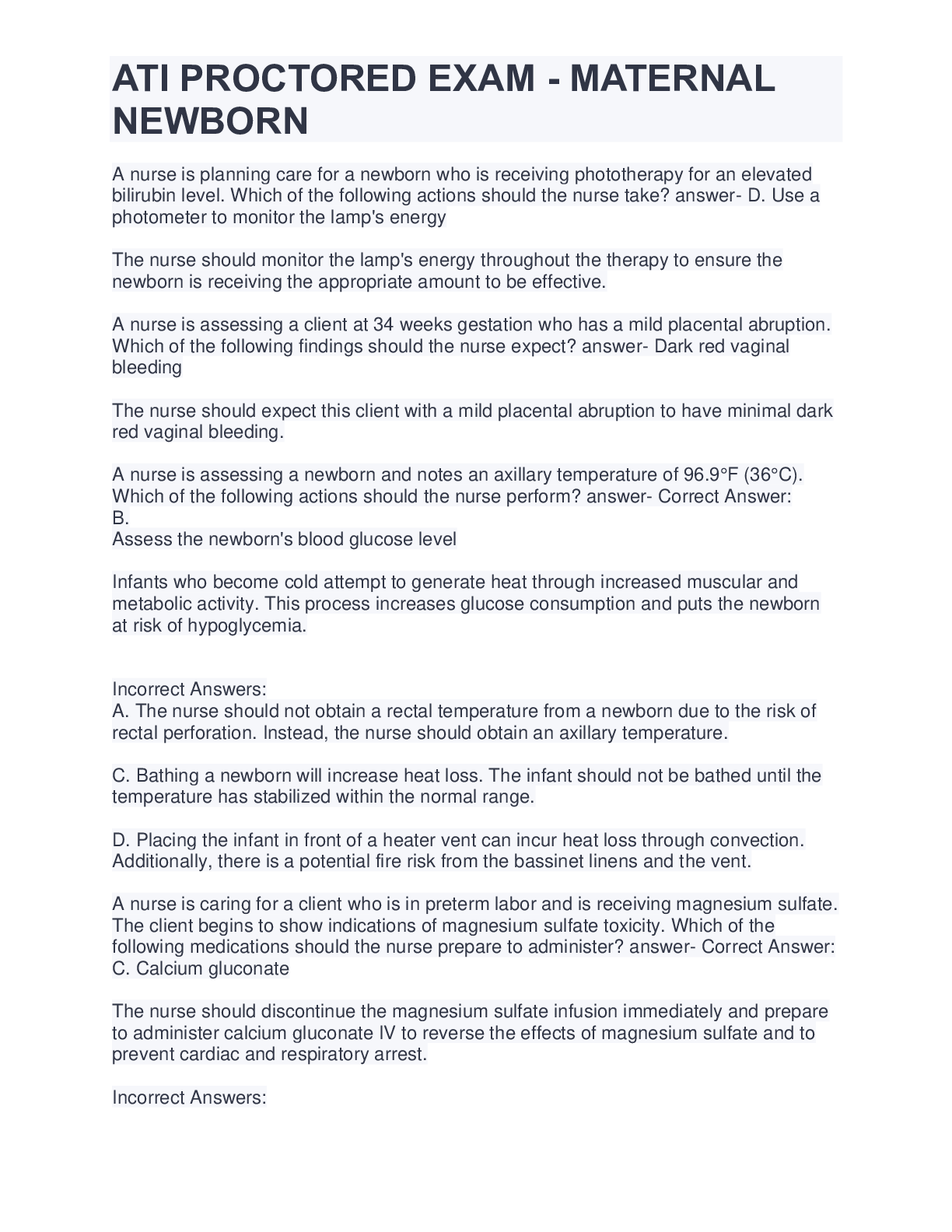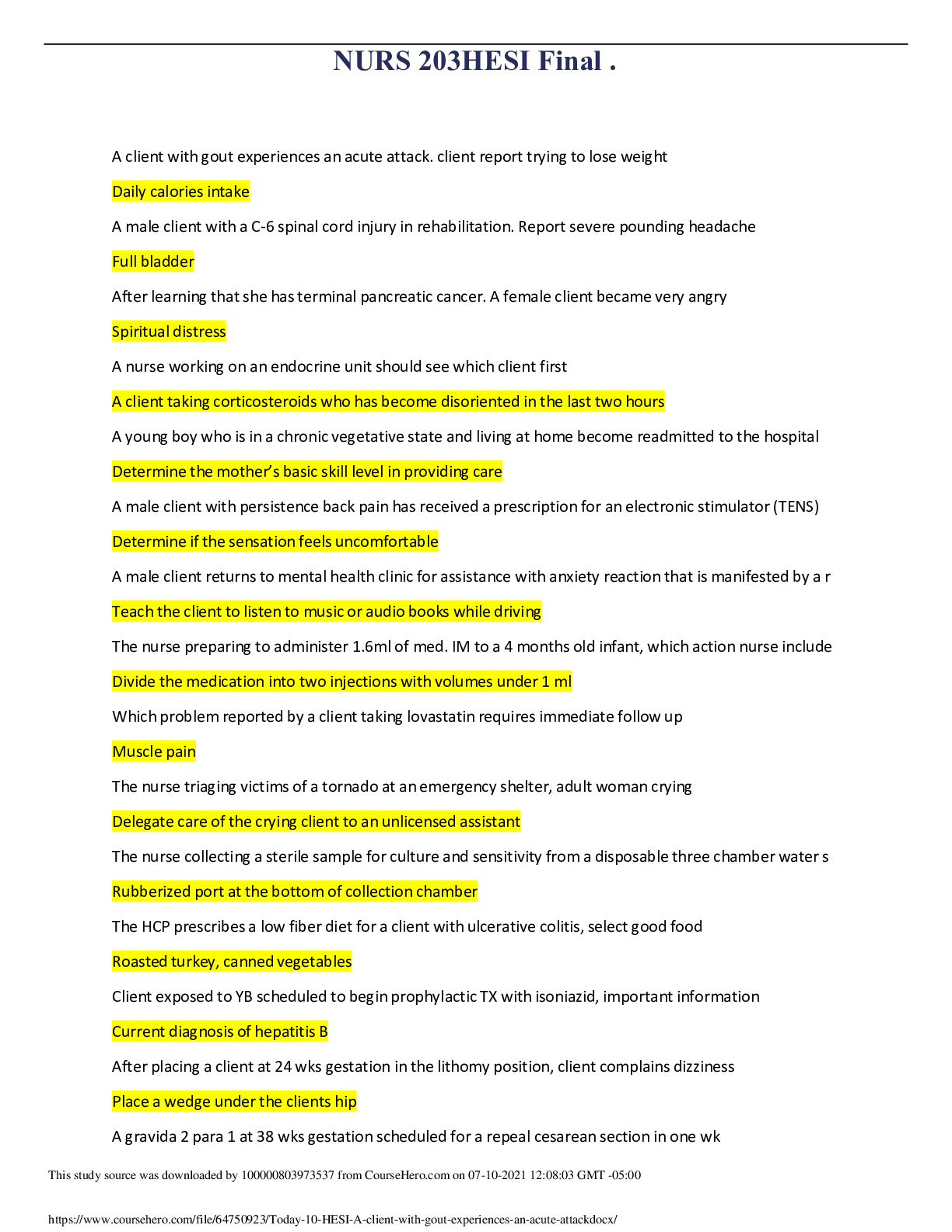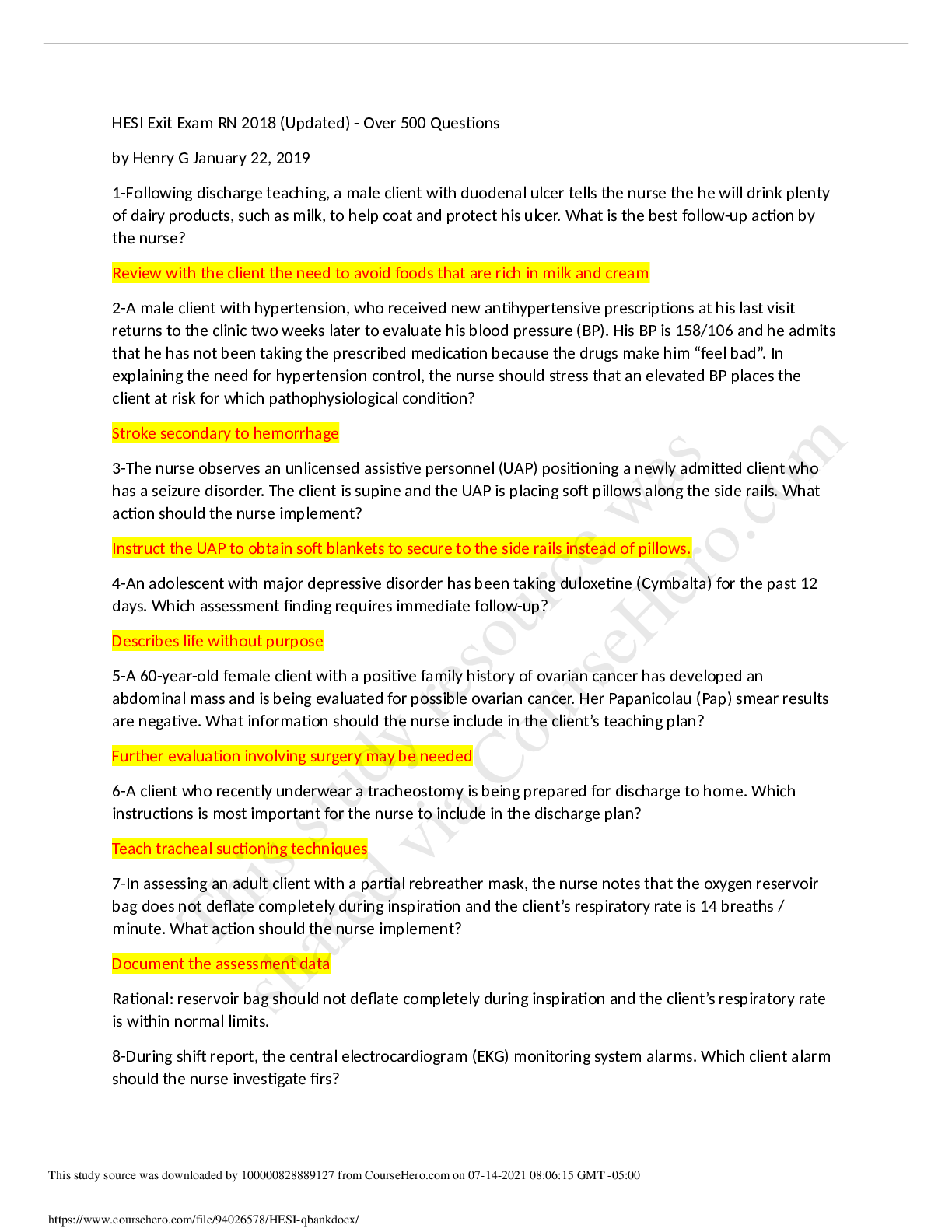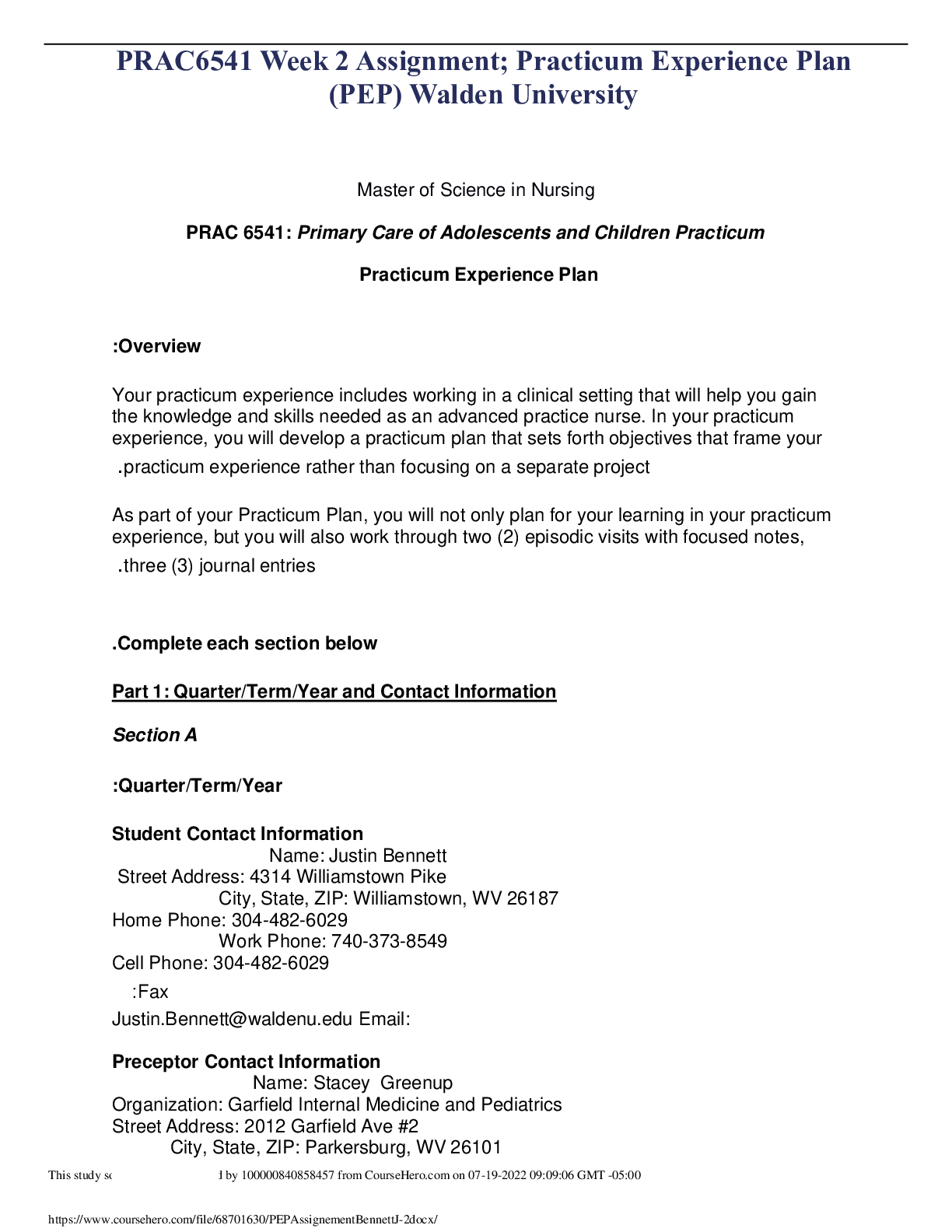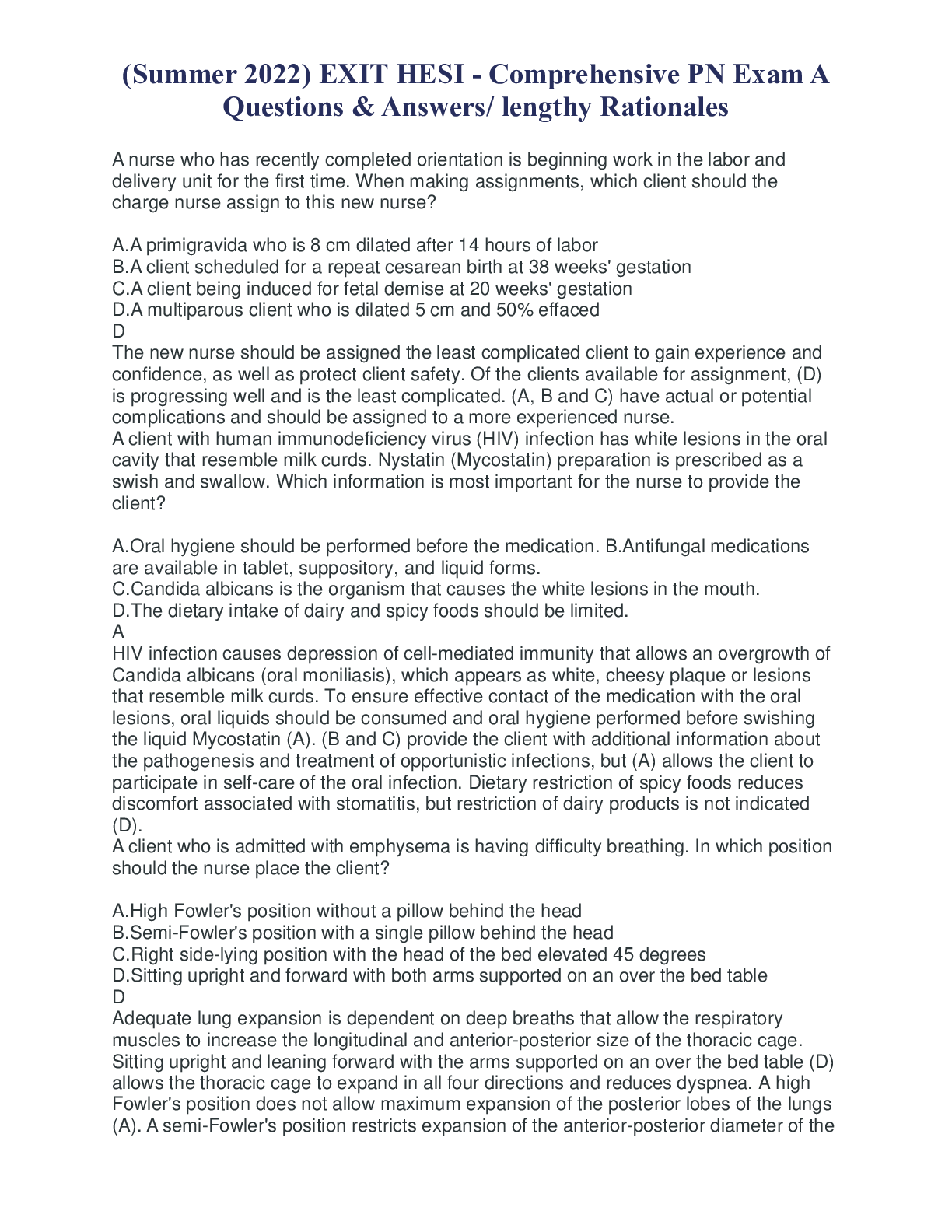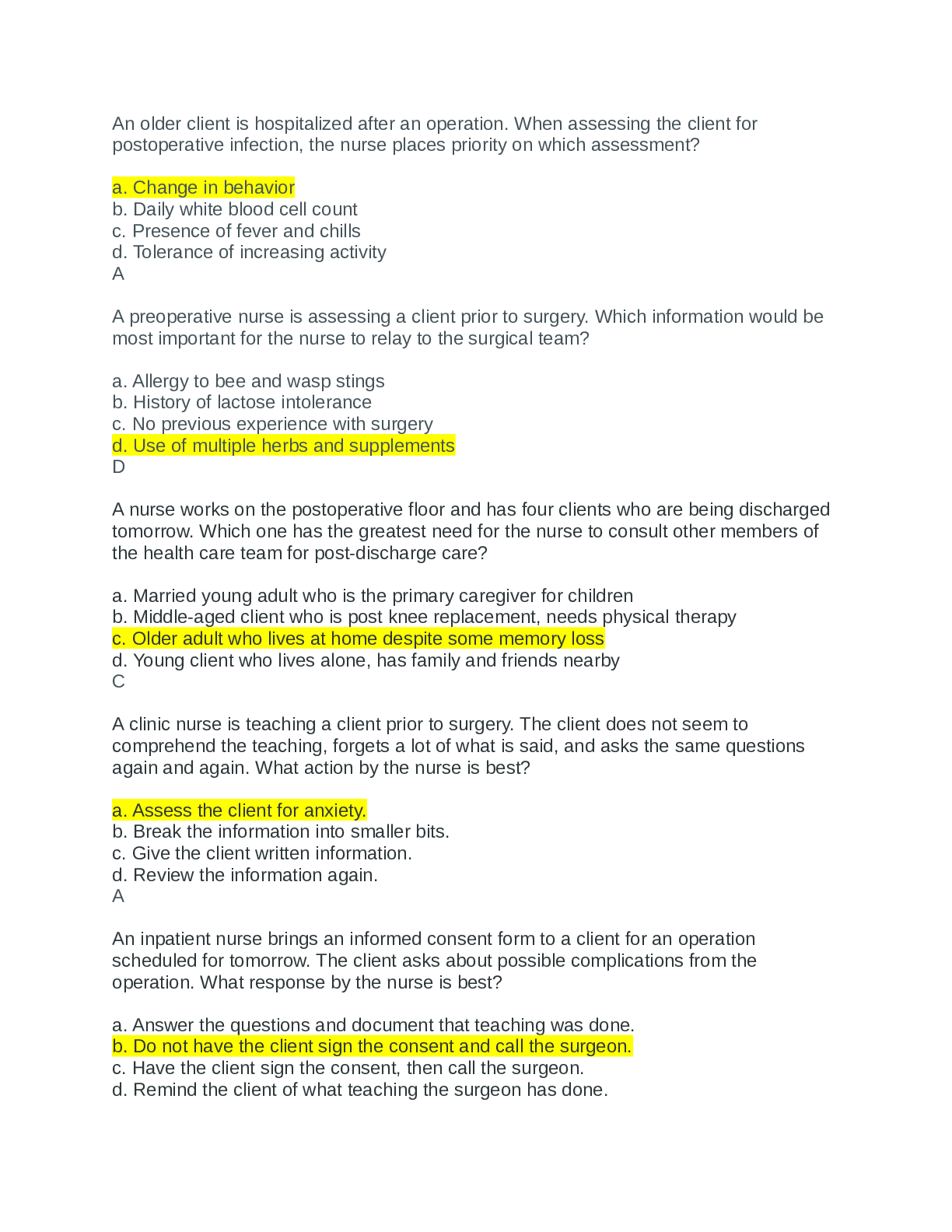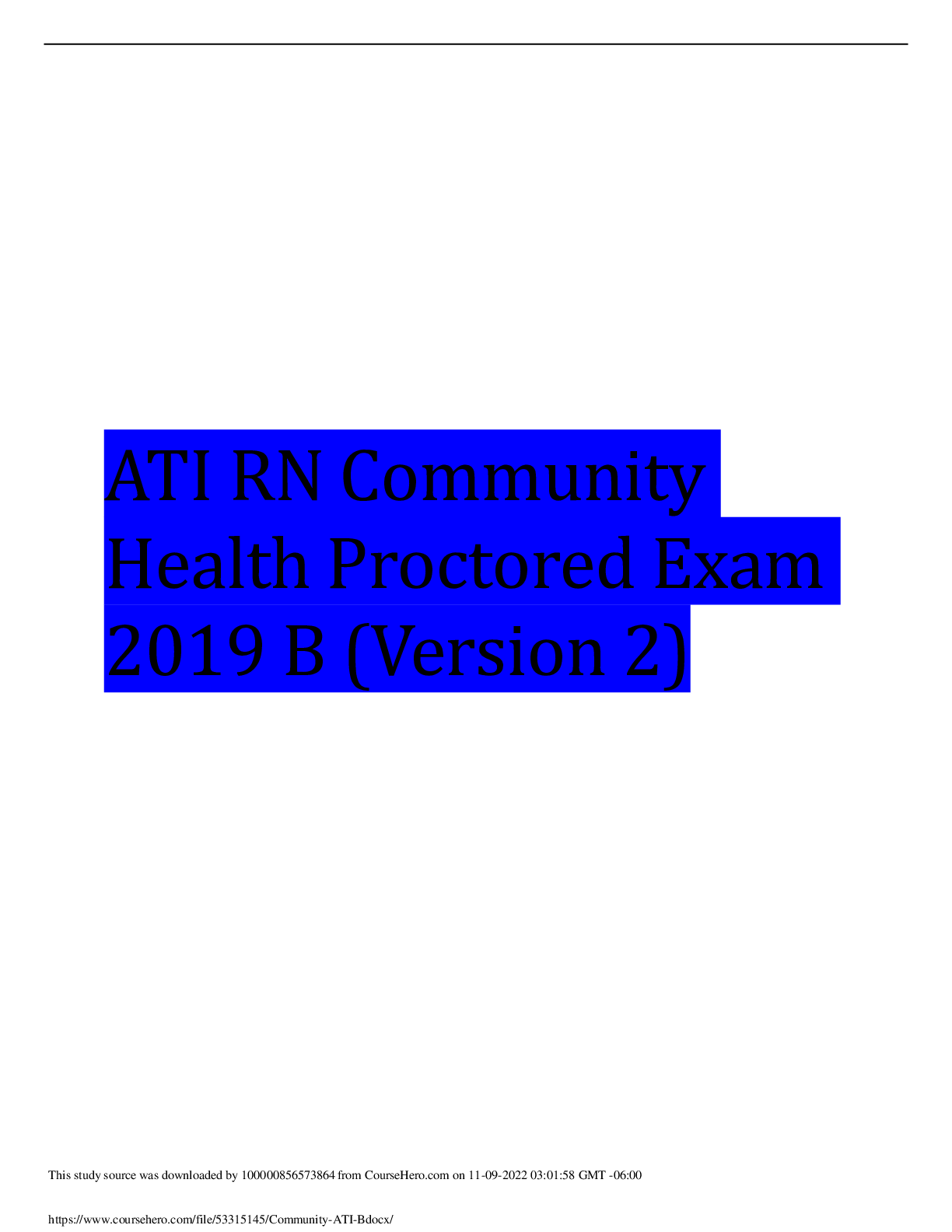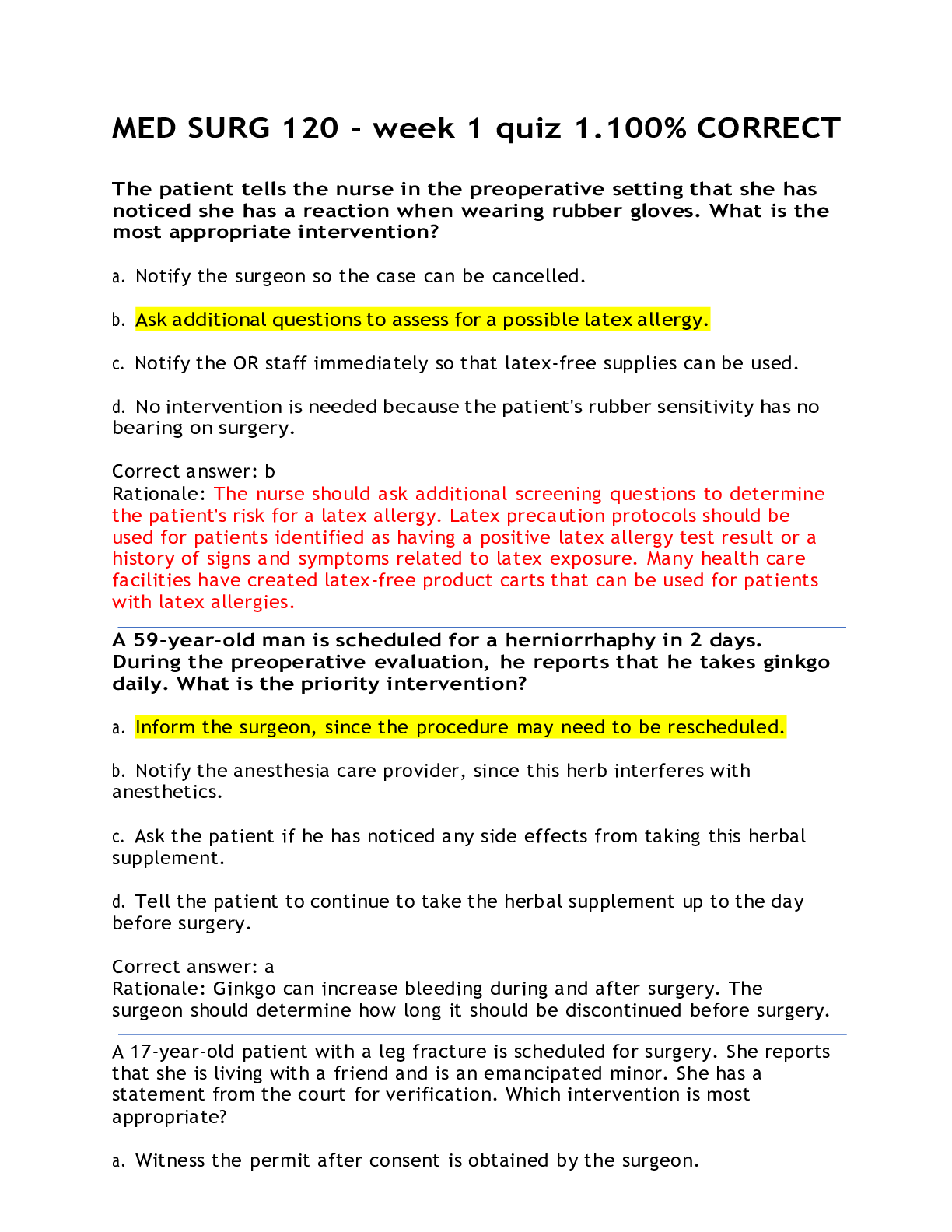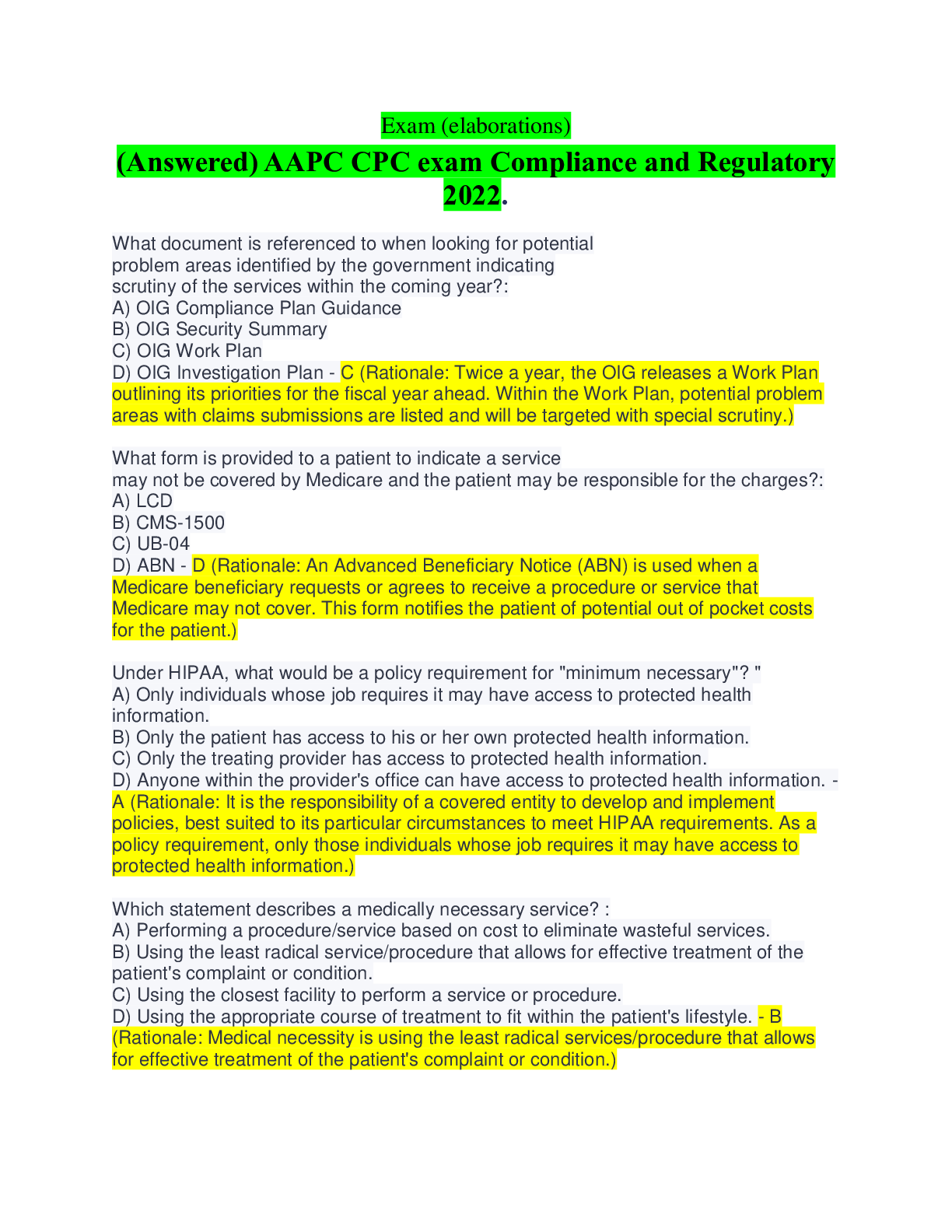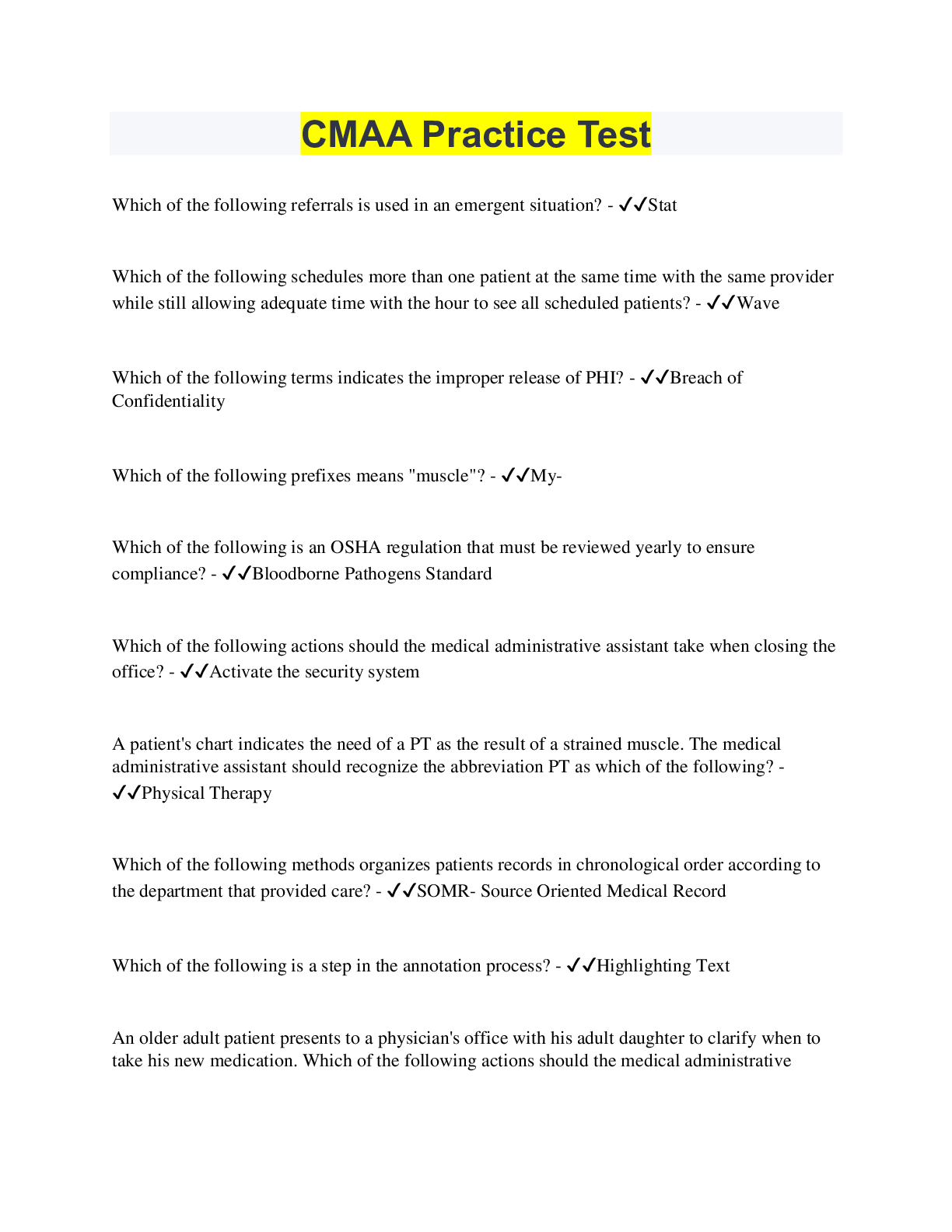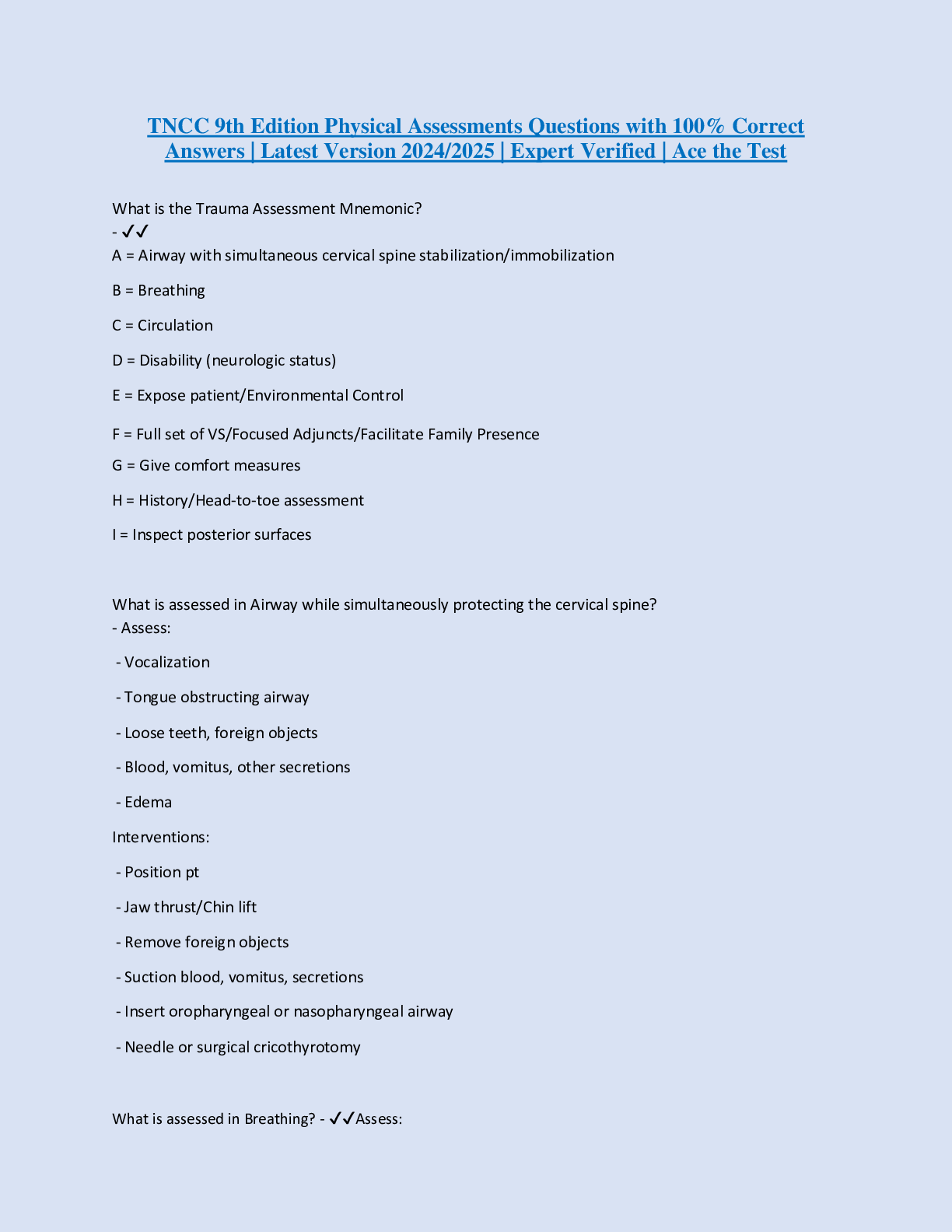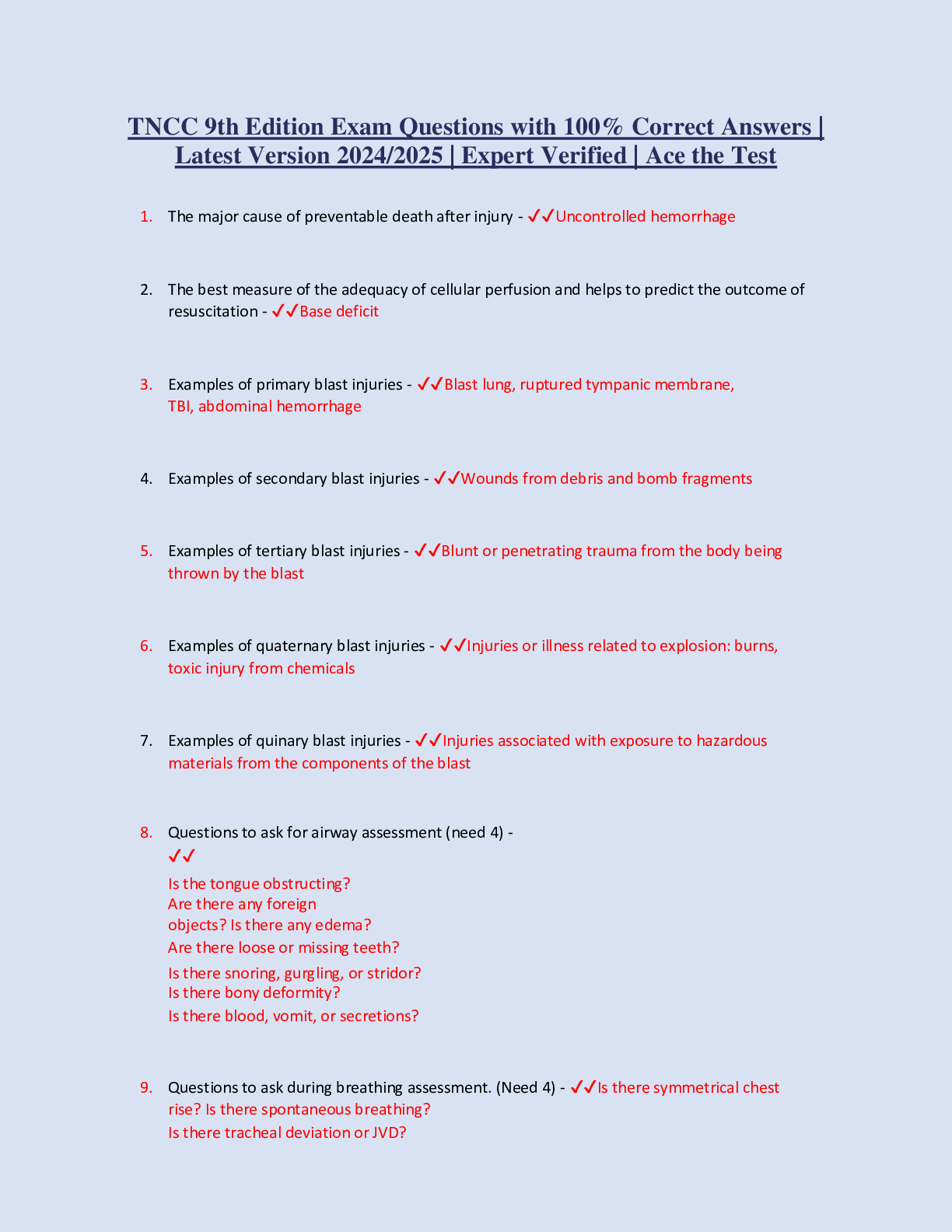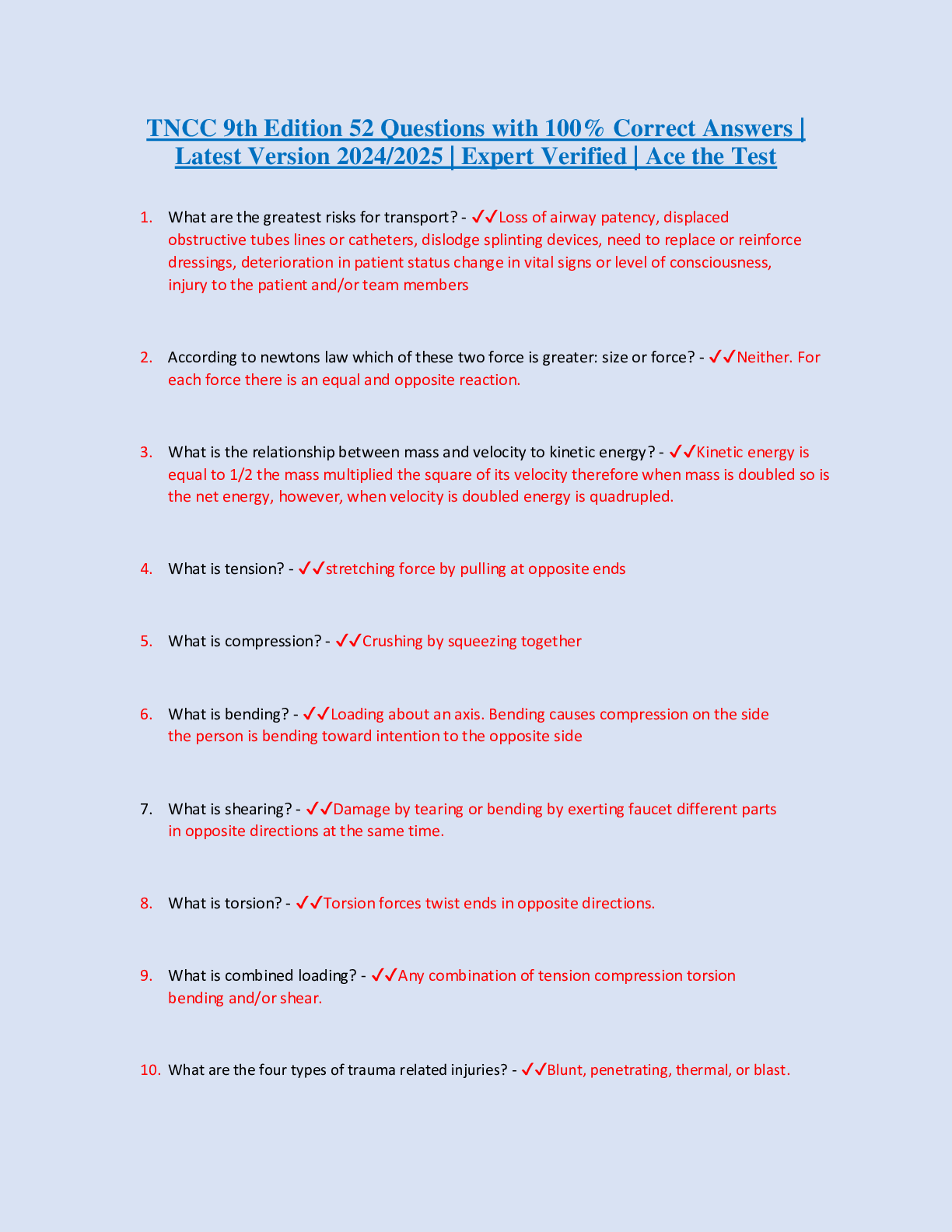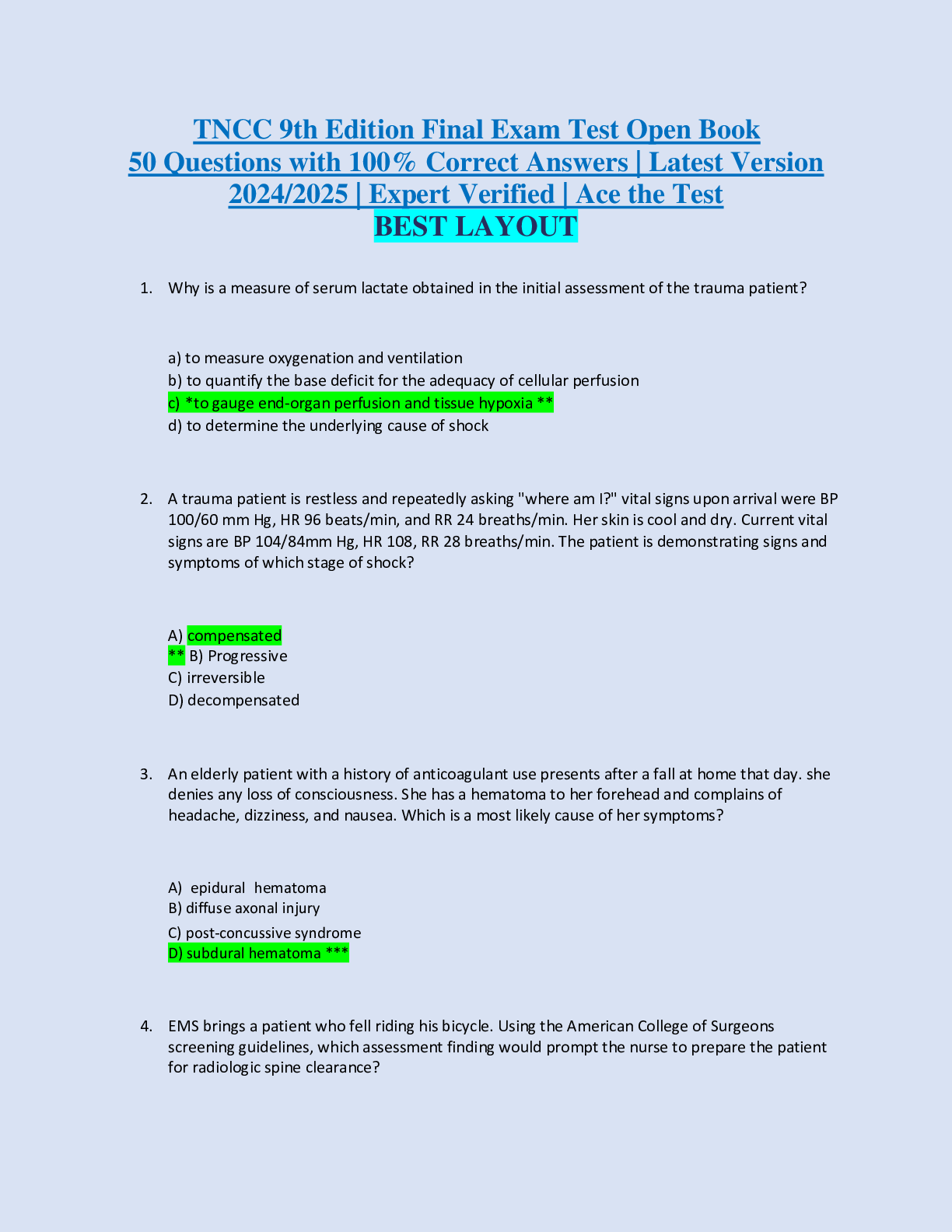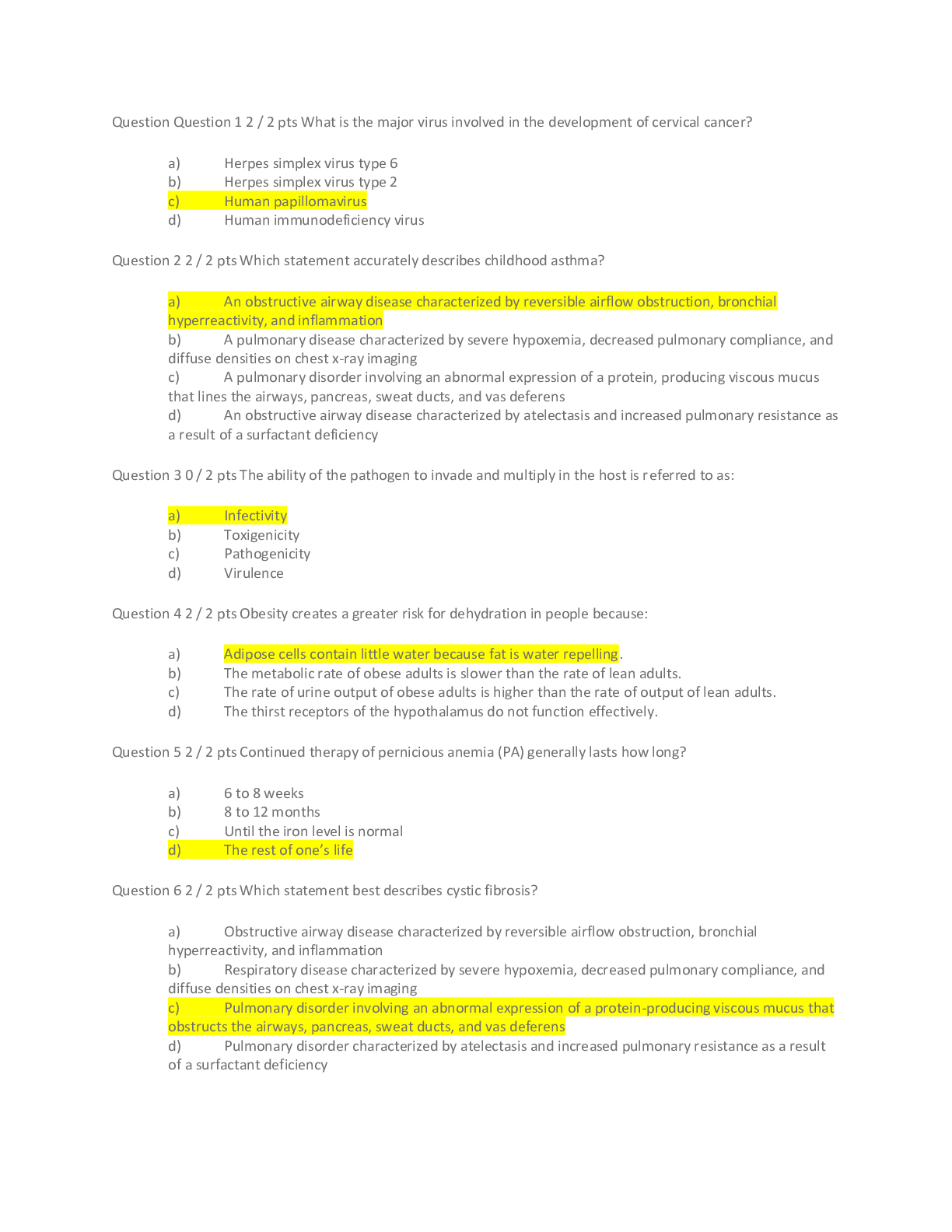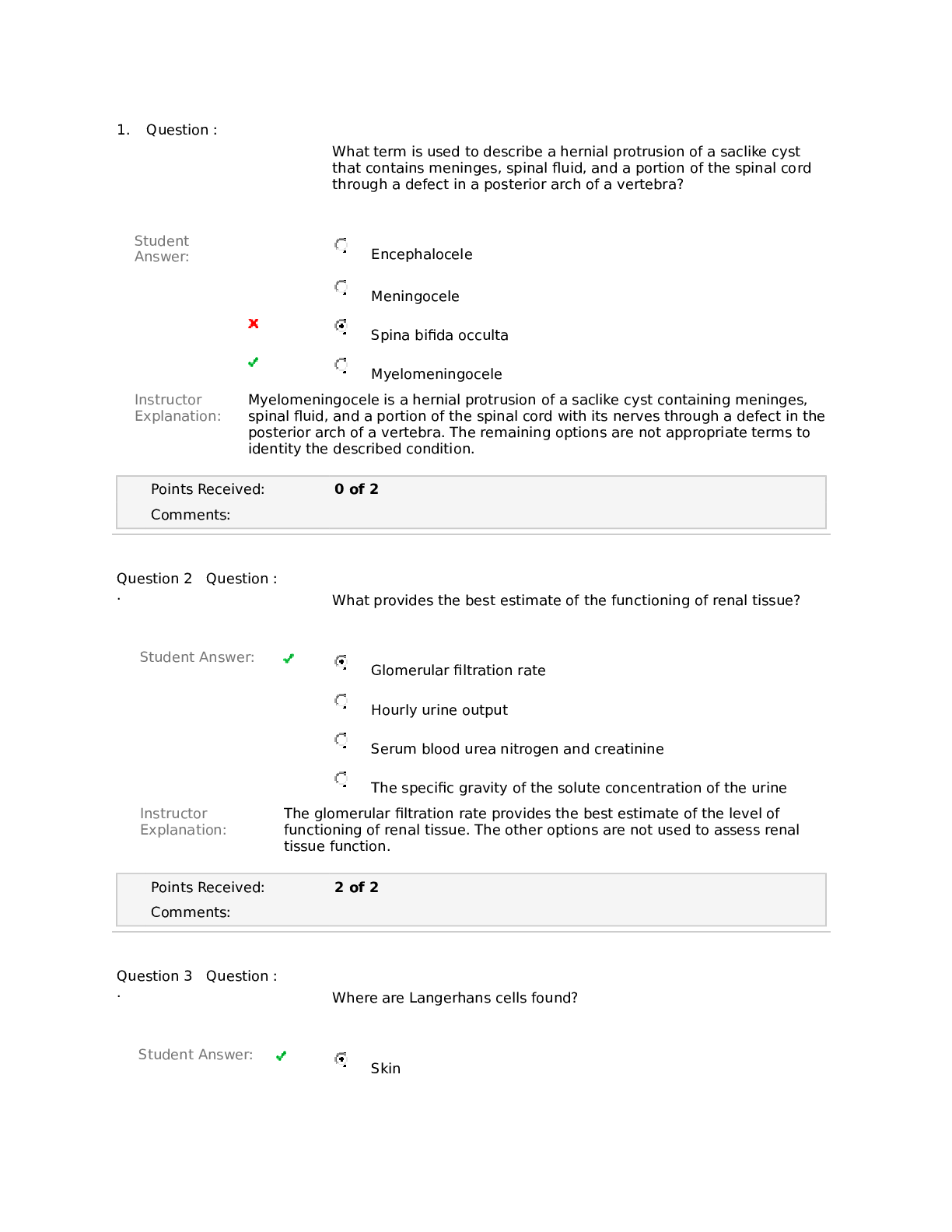Brittany Long Complex VSIM.,WELL EXPLAINED 100% CORRECT.
Document Content and Description Below
Opening Questions 1. How did the simulated experience of Brittany Long's case make you feel? This simulated experience made me feel like I was actually caring for a little girl who has sickle cell a... nemia. I was sort of nervous at first because I wasn’t sure how to care for her due to the fact that I don’t know much about sickle cell. I didn’t know what to expect going into the situation and probably should have read up on sickle cell anemia before starting the simulation. However, I know that sometimes if a person is seriously ill then I won’t have time to read the chart or anything before hand so I’m sort of glad I went into this simulation with limited knowledge. 2. Describe the actions you felt went well in this scenario. What went well within this simulation is completing a thorough assessment of the patient. I made sure to take her vitals, auscultate her heart and lungs, assess her skin and IV, assess her mucous membrane, and I assessed her pain level. After I found out the patient had pain and wanted pain medication, I looked into her chart and seen that the patient had 2 mg of morphine IV. Therefore, I gave her the morphine to ease her pain and called the doctor to help with the other symptoms of the sickle cell crisis. After the orders was put in, I immediately gave the medication and made sure to assess the patient afterwards. Lastly, I made sure to educate the patient and the patient’s mother. Scenario Analysis Questions* 3. EBP How did the findings from Brittany Long's physical assessment and diagnostic studies affect decisions you made about the administration of intravenous (IV) fluid and blood products? Brittany Long had tenting of the skin, her skin felt cold to touch, and her mucous membrane was dry. She also didn’t have any energy to eat anything by mouth. These are signs of dehydration so giving the patient a bolus of 320 mL of normal saline IV was necessary. Her hemoglobin decreased by 1.3 g/dL, and is now 7.5 g/dL; her platelets decreased and are about 200, and her reticulocyte count increased and is 7.5. These are signs of laboratory assessment of sickle cell anemia and indicates that the patient needed blood. Therefore, it was necessary to infuse packed red blood cells at 28 mL/hr. Blood transfusions are indicated are indicated in children with prolonged or widespread pain, aplastic crisis, or splenic sequestration. 4. EBP What complications might Brittany Long face if her symptoms are not recognized and treated in a timely manner? Complications of sickle cell anemia include recurrent vaso-occlusive pain crises, stroke, sepsis, acute chest syndrome, splenic sequestration, reduced visual acuity related to decreased retinal blood flow, chronic leg ulcers, cholestasis and gallstones, delayed growth and development, delayed puberty, and priapism in males. Enuresis is also common because the kidneys can’t efficiently concentrate urine. Another common complication that occurs in adulthood is multiple organ dysfunction. 5. PCC Reflecting on the care you provided Brittany Long, identify how the anxiety of Brittany's mother would impact your nursing interventions and actions and Brittany's responses. The psychological distress of the patient’s mother could lead to the mother feeling overwhelmed from the thought of being helpless to her child or thinking that her child condition may get worse. This in turn may affect Brittany because she may see that her mother is very anxious about her being in the hospital and this may heighten her own anxiety and fears. Brittany may already have fears about being in an unfamiliar environment and not knowing what will happen next and therefore, seeing her mother in this state may cause Brittany to pick up on her mother’s emotional cues and replicate that emotion. This could affect my nursing interventions because I have to deal with the anxiety of the patient and her mother in order to effectively implement any interventions. 6. PCC What nursing considerations would be appropriate in the crisis situation to decrease the anxiety of Brittany Long and her mother and improve coping? I would decrease the anxiety of Brittany and her mother by making sure that they are comfortable. I asked the patient about her pain level because she was complaining about having pain in her leg. I then asked her if she wanted something for the pain. I gave her morphine because this will relieve the pain and make her more comfortable. Another way that I decreased the anxiety of the patient and her mother is by explaining the instruments and procedures so that they can feel more comfortable with the nursing care and surroundings. I also comforted the patient by giving her a toy and offering her a sip of her favorite drink. 7. S/QI Reflect on ways to improve safety and quality of care based on your experience with Brittany Long's case. Ways that I can improve safety is by identifying the patient to make sure that a match is made between the service or treatment and the patient. I also identified the relative because the patient is under 18 and needs a legal guardian present for the nursing care. I also made sure to ask about any allergies so that I won’t give the patient anything that she is allergic to. Another thing that I did was take vitals before and after administering medication in order to determine if the medication was effective or if the patient had an adverse effect to the medication. Before I gave the medication and the blood transfusion, I made sure to get a consent form signed by the mother. I also made sure to verify the blood, patient id, and type and cross match by two nurses. All of these procedures were to ensure that I gave the patient the appropriate care. 8. T&C/I What key elements would you include in the handoff report for this patient? Consider the situation-background-assessment-recommendation (SBAR) format. a) Situation: Brittany Long is a 5-year-old African American female b) Background: with a history of sickle cell anemia and is usually treated with folic acid supplements. She came in yesterday with acute vaso-occlusive pain. c) Assessment: There is tenting sign of the skin and her skin is quite cold. The breath sounds are clear and equal bilaterally. There were regular heart sounds without murmurs. Normal bowel sounds were heard. She is breathing at 35 breaths per minute and the chest is moving equally. Sinus tachycardia. Heart rate: 161. Pulse: Present. Blood pressure: 85/68 mmHg. Respiration: 35. Conscious state: Appropriate. SpO2: 96%. Temp: 37.5 C. Patient is on nasal cannula with oxygen 2 L/min and receives intravenous maintenance fluids at 52 mL/hr. The patient answered 3 on the FACES pain scale with a range of 0 to 5. I administered 2 mg of morphine IV. I later reassessed the patient’s pain. The patient answered 0 on the FACES pain scale with a range of 0 to 5. Legal consent was obtained from the mother to give blood. I verified the blood, patient id, and type and cross match by two nurses I started infusing packed red blood cells at 28 mL/hr. I started a bolus of 320 mL of normal saline IV, given over 30 minutes. d) Recommendation: The patient need to be reassessed per hospital protocol, to assess for transfusion complications. Concluding Questions 9. Reflecting on Brittany Long's case, were there any actions you would do differently? If so, what were these actions, and why would you do them differently? The only thing that I would do differently is I would focus on a focused assessment for the patient. For example, I wouldn’t have auscultated bowel sounds because her it would make sense on what’s affecting her health at the moment. I would focus on inspecting the skin for pallor, inspecting the mucosa for color and moisture, and auscultating the heart for a murmur. I would also note the blood pressure, which may be decreased with severe anemia or increased with sickle cell nephropathy. I would pay attention to the temperature to evaluate for infection. I would listen to the breath sound to listen for adventitious breath sounds which would indicate that a respiratory infection has triggered the sickle cell. I would lastly note the heart rate as it can increase with pain, hyperthermia, or dehydration. 10. Describe how you would apply the knowledge and skills that you obtained in Brittany Long's case to an actual patient care situation. I would apply the knowledge and skills to an actual patient by making sure that I identify the patient and relatives first. I would make sure to complete a thorough focused assessment of the patient to determine the problem in a timely manner. This also gives me the reminder that when giving blood I always have to have the guardian sign a consent form and to have another nurse or two double check. Another reminder I would remember from this simulation is to make sure to comfort the patient and parent in any way. Explaining procedures to them and letting the child play with the equipment can help ease anxiety. Something as simple as giving the child a toy could be a comforting measure that make a difference in calming a patient. The last thing I would get from this simulation that I could apply to real life is believing what the patient with sickle cell anemia says especially about pain because it could indicate acute vaso-occlusive pain [Show More]
Last updated: 1 year ago
Preview 1 out of 3 pages

Reviews( 0 )
Document information
Connected school, study & course
About the document
Uploaded On
May 12, 2021
Number of pages
3
Written in
Additional information
This document has been written for:
Uploaded
May 12, 2021
Downloads
0
Views
174

